- Marvel Entertainment - A Remarkable Turnaround
- Tesla's Successful Transition to Sustainable Business Practices
- Toyota's JIT Revolution
- Tata Nano - Making of the People's Car
- Ola versus Uber: The Survival War
- Patanjali - Ayurvedic Brand Disrupting the Indian FMCG Industry
- Pepsi's Crisis Management and Innovative Strategies
- Vodafone Idea Merger
- Titan’s Leap into Online Business
- Impact of Blockchain Technology on Traditional Industries
- Unacademy: A Case Study on Digital Transformation in Education
- Impact of Technology on Healthcare Delivery and Patient Outcomes
- Case Studies For Further Reading
- Summing Up...
20 Best Business Case Studies That Every MBA Student Must Know!

MBA Case studies are an inseparable part of business schools curriculum. It is the accumulated real-life experiences developed into a study method that help students to understand real business situations. Case studies supplemented with class discussions develop critical thinking faculties which help in building a better strategy and approaching an issue. Here are the top 20 MBA case studies that every management student should be acquainted with. Let’s get started.
Learn the ins and outs of Brand Management! Check out this course on Unstop
Marvel Entertainment - A Remarkable Turnaround
Marvel Entertainment, a renowned American entertainment company, faced near-collapse in the late 1990s due to financial difficulties and mismanagement. The company's missteps in diversifying into various non-core businesses, such as trading cards and toys, further exacerbated their financial woes. As a result, Marvel was on the brink of bankruptcy, with its stock price plummeting and its brand losing its appeal among consumers.
Strategic Restructuring: To address the dire situation, Marvel implemented a comprehensive restructuring plan. Firstly, they focused on their core business of publishing comic books and decided to divest non-core assets, including their toy division. This allowed them to streamline operations and reduce costs significantly. Additionally, Marvel renegotiated licensing agreements to regain control over their intellectual property rights, which had previously been licensed out to other companies.
Revitalizing the Brand: Marvel recognized the need to revitalize their brand and reconnect with their target audience. They embarked on a strategy of creating compelling storylines and introducing new characters that resonated with readers. This approach led to the launch of successful comic book series such as 'Ultimate Spider-Man' and 'The Avengers', which helped reignite interest in Marvel's characters and stories.
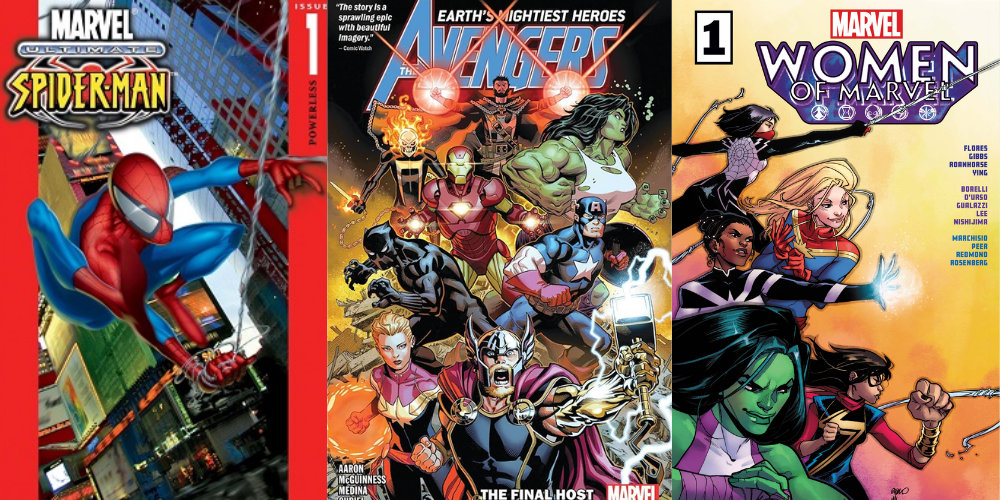
Expanding into Film and Television: One of the pivotal factors in Marvel's turnaround was their foray into the film and television industry. Recognizing the potential of their vast library of characters, Marvel formed its own film production studio, Marvel Studios. Overall, Marvel's expansion into film and television played a crucial role in their remarkable turnaround. By creating a shared cinematic universe and exploring different storytelling mediums, Marvel was able to captivate audiences and establish themselves as a powerhouse in the entertainment industry.
Marvel Studios revolutionized the way superhero movies were made by creating a shared cinematic universe. Their success not only revitalized the company but also paved the way for other studios to follow suit and create their own interconnected universes.
Tesla's Successful Transition to Sustainable Business Practices
Tesla, founded in 2003 by Elon Musk, has emerged as a prominent player in the automotive industry through its successful transition to sustainable business practices. This case study examines how Tesla has effectively implemented sustainable strategies, positioning itself as a leader in electric vehicles (EVs) and renewable energy solutions. Recognizing the urgent need for sustainable alternatives, Tesla set out to revolutionize the transportation sector by focusing on electric mobility.
Transition to Electric Vehicles: Tesla's transition to sustainable business practices began with the launch of its first electric vehicle, the Tesla Roadster, in 2008. This groundbreaking model showcased the potential of EVs, offering high performance and zero tailpipe emissions. By leveraging advanced battery technology and innovative design, Tesla successfully addressed the limitations of early EVs, such as limited range and high costs.

Investment in Research and Development: To further solidify its position as a leader in sustainable transportation, Tesla heavily invested in research and development (R&D). The company continuously improved its battery technology, resulting in increased energy density and longer driving ranges for its vehicles. Additionally, Tesla focused on enhancing charging infrastructure by deploying Supercharger stations globally, enabling convenient long-distance travel for EV owners.
Vertical Integration and Supply Chain Sustainability: Tesla's commitment to sustainability extended beyond its products. The company embraced vertical integration by establishing its Gigafactories, which produce batteries and electric drivetrains in-house. This approach not only ensured quality control but also reduced reliance on external suppliers, thereby minimizing environmental impacts associated with transportation and logistics.
Renewable Energy Solutions: Recognizing the interconnectedness of transportation and energy systems, Tesla expanded its focus to renewable energy solutions. In 2016, the company acquired SolarCity, a leading solar energy provider. Tesla's acquisition of SolarCity in 2016 marked a significant step towards the company's successful transition to sustainable business practices. This strategic move allowed Tesla to offer integrated solar and energy storage solutions, further solidifying its position as a leader in the sustainable energy sector.
Tesla's successful transition to sustainable business practices can be attributed to its focus on renewable energy solutions. The acquisition of SolarCity allowed Tesla to offer integrated solar and energy storage solutions, helping it become a strong player in the E-vehicle market.
Toyota's JIT revolution
Toyota's Just-in-Time (JIT) revolution is a remarkable case study that revolutionized the manufacturing industry. This MBA case study will delve into the key elements of Toyota's JIT system, its implementation, and the impact it had on the company's success.
Toyota faced significant challenges in the 1950s, including limited resources and fierce competition. To overcome these obstacles, the company adopted the JIT philosophy, aiming to eliminate waste, reduce inventory, and enhance efficiency.
Implementation: Toyota's JIT system focused on reducing inventory levels by establishing a pull-based production system. This involved producing only what was needed, when it was needed, and in the required quantity. The company collaborated closely with suppliers to ensure timely delivery of parts, reducing the need for excess inventory.
Impact: The implementation of JIT revolutionized Toyota's operations. It enabled the company to reduce lead times, improve quality control, and increase overall productivity. By eliminating waste and optimizing production processes, Toyota achieved cost savings and enhanced customer satisfaction.
Lessons Learned: Toyota's JIT revolution offers valuable lessons for MBA students and business professionals. It highlights the importance of lean manufacturing principles, effective supply chain management, and continuous improvement. The case study demonstrates how a strategic focus on efficiency and waste reduction can lead to a sustainable competitive advantage.
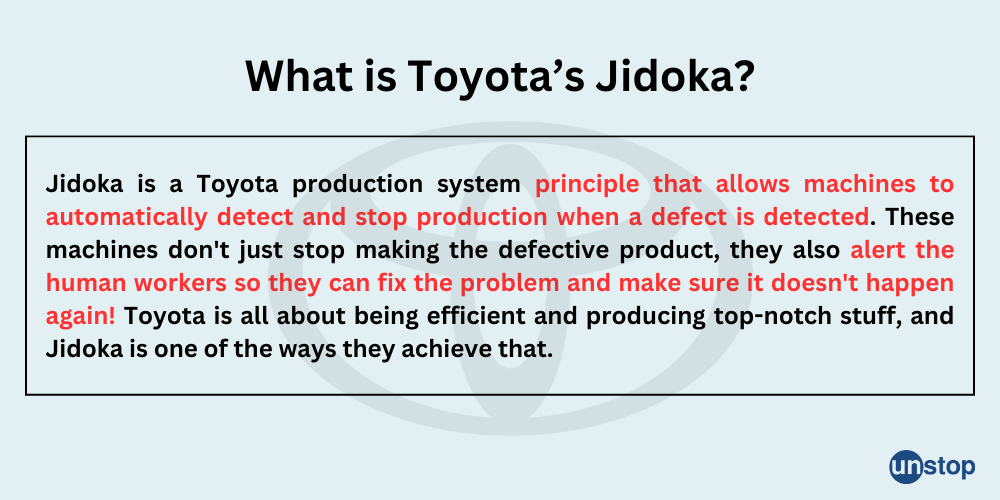
Tata Nano - Making of the People's Car
The Tata Nano, also known as 'The People's Car', was launched by the Indian automaker Tata Motors in 2009. It was envisioned as an affordable and compact vehicle that would provide mobility to the masses in India. However, despite its initial hype and expectations, the Tata Nano faced numerous challenges and setbacks, making it an interesting case study for MBA students.
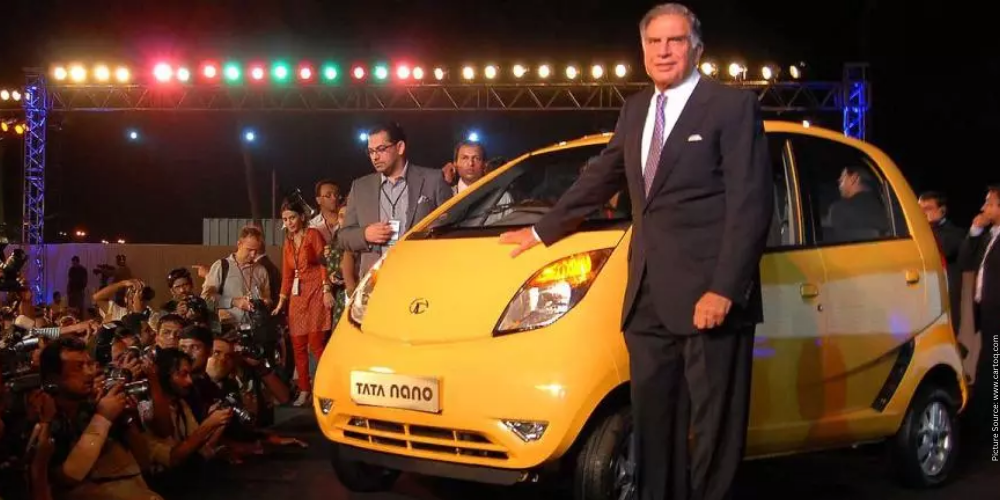
Tata Motors, a subsidiary of the Tata Group, aimed to create a car that would revolutionize the Indian automobile market. The Nano was designed to be the world's cheapest car, priced at around USD 2500. It was positioned as a safer and more comfortable alternative to motorcycles and three-wheelers, which were the primary means of transportation for many Indian families.
Marketing Strategy: Tata Motors adopted an innovative marketing strategy to promote the Nano. They focused on creating awareness and generating interest through various channels, including online campaigns, roadshows, and tie-ups with microfinance institutions. The company aimed to tap into the aspirations of the lower-middle-class segment and create a strong emotional connection with potential buyers.
Challenges and Setbacks: Despite its initial success in generating buzz and attracting bookings, the Tata Nano faced several challenges that hindered Nano's manufacturing process, growth, and market penetration. Some of the key challenges were safety concerns, production issues, competition, etc.
Overcoming Challenges: Tata overcame the challenges through a combination of cost-cutting measures, efficient supply chain management (vendor parks, reducing logistics costs), strategic decision-making regarding plant location, marketing efforts to change perceptions, and addressing safety concerns. The company addressed the safety concerns by making design modifications, conducting extensive safety tests, and meeting safety regulations. Tata invested in safety features and communicated these measures to the public to build confidence in the Nano's safety. Thus, despite facing obstacles, Nano demonstrated the importance of adaptability and innovation in bringing an affordable and innovative product to market.
Ola versus Uber: The Survival War
Ola, founded in 2010, was the first ride-hailing platform in India and quickly gained popularity due to its affordable pricing and extensive network. Uber, a global giant, entered the Indian market in 2013, bringing its technology-driven approach and strong brand recognition. The entry of Uber presented a significant challenge to Ola's dominance, leading to intense competition between the two players.
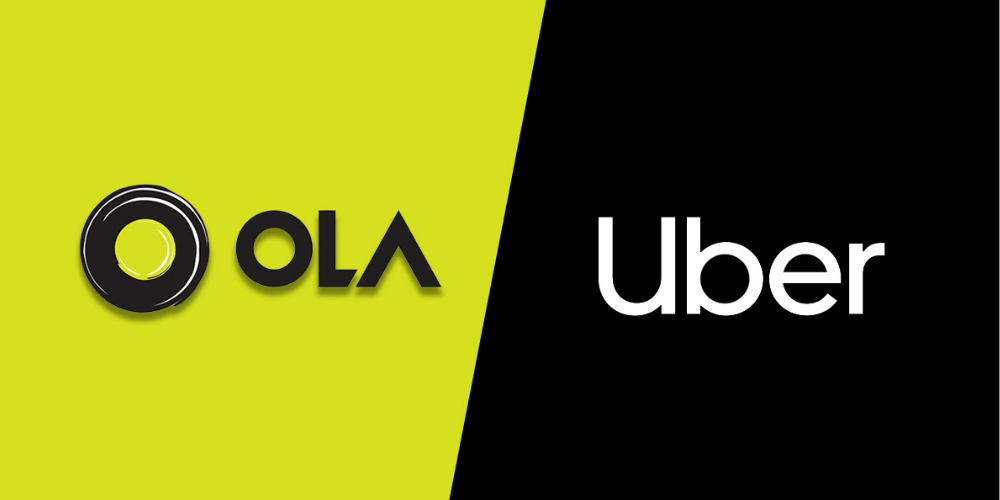
Strategies: Both Ola and Uber have employed various strategies to gain a competitive edge in the Indian market. Ola focused on building a strong network of drivers by offering attractive incentives and benefits. They also invested heavily in marketing and promotions to establish themselves as the preferred choice for customers.
On the other hand, Uber leveraged its global presence and technological expertise to provide a seamless user experience. They introduced innovative features like upfront pricing, cashless payments, and in-app navigation to differentiate themselves from Ola.
Pricing Models: Pricing has been a crucial aspect of the competition between Ola and Uber. Ola initially adopted a dynamic pricing model, where fares fluctuated based on demand and supply. This approach allowed Ola to maximize revenue during peak hours but also led to customer dissatisfaction due to surge pricing.
In contrast, Uber introduced upfront pricing, providing customers with transparency and certainty regarding fares. This pricing model appealed to customers and helped Uber gain a competitive advantage.
Regulatory Challenges: Operating in India's ride-hailing market posed significant regulatory challenges for both Ola and Uber. The government introduced various regulations to ensure passenger safety, driver welfare, and fair competition. Ola and Uber had to comply with these regulations, including obtaining licenses.
Lessons: OLA and Uber engaged in fierce competition in the Indian market, with OLA gaining an early lead due to localization efforts and strategic partnerships. Despite Uber's global presence, OLA's focused approach and understanding of local dynamics allowed it to maintain a strong brand presence in the competitive Indian ride-hailing sector. Having said this, Uber brought innovation and a seamless user experience to India's ride-hailing sector. Its international appeal and technological prowess challenged OLA, fostering healthy competition and pushing both companies to enhance their services for Indian consumers.
Patanjali - Ayurvedic Brand Disrupting the Indian FMCG Industry
Patanjali, an Indian brand established in 2006 by Baba Ramdev and Acharya Balkrishna, has rapidly emerged as a major player in the fast-moving consumer goods (FMCG) industry. With its focus on Ayurvedic and natural products, Patanjali has disrupted the market dominated by multinational giants.
Branding and Marketing Strategy: Patanjali's success can be attributed to its effective branding and marketing strategies. The brand positioned itself as a 'swadeshi' (indigenous) alternative to multinational brands, appealing to the patriotic sentiments of Indian consumers. Patanjali's advertisements featuring Baba Ramdev and its focus on natural ingredients resonated with health-conscious consumers.
Disruptive Pricing: Patanjali disrupted the FMCG market by offering quality products at competitive prices. By eliminating middlemen and focusing on cost-effective production methods, the brand was able to provide affordable alternatives to consumers.

With its strong marketing strategies and disruptive pricing, Patanjali rapidly expanded outreach, leveraging Baba Ramdev's vast network of yoga centers and retail outlets. The brand also adopted an aggressive distribution strategy by partnering with modern retail chains and e-commerce platforms, ensuring its products were easily accessible to consumers across India and thus becoming a trusted name in the market.
Pepsi's Crisis Management and Innovative Strategies
In 1993, PepsiCo faced a major crisis when reports emerged of consumers finding syringes and needles in cans of Diet Pepsi. This incident, known as the ‘Pepsi syringe scare’, caused widespread panic and led to a decline in consumer trust and sales. The crisis posed a significant challenge for PepsiCo, requiring swift action and innovative strategies to regain consumer confidence.
Rapid Response: Recognizing the urgency of the situation, PepsiCo swiftly responded to the crisis by launching a comprehensive investigation into the reported incidents. The company collaborated with law enforcement agencies, medical experts, and suppliers to identify the source of contamination and implement immediate corrective measures.
Transparent Communication: To rebuild trust with consumers, PepsiCo prioritized transparent communication throughout the crisis. The company provided regular updates on the investigation's progress, ensuring that accurate information was disseminated to the public. By being open and honest, PepsiCo aimed to dispel rumors and restore confidence in its products.
Collaboration with Stakeholders: PepsiCo actively engaged with various stakeholders, including government agencies, industry experts, and consumer advocacy groups. The company sought their input and collaborated on developing enhanced safety measures and quality control protocols. This collaborative approach helped PepsiCo demonstrate its commitment to consumer safety and regain credibility.
Product Innovation: As part of its crisis management strategy, PepsiCo introduced innovative packaging solutions to address consumer concerns about product tampering. The company developed tamper-evident seals and redesigned its cans to incorporate additional protective layers. These innovations reassured consumers that PepsiCo was taking proactive steps to prevent future incidents.
Marketing Campaigns: Pepsi's crisis management strategies were not limited to addressing the immediate concerns surrounding the syringe scare. The company also focused on long-term initiatives to rebuild its reputation and strengthen its position in the market.
Throughout the crisis and beyond, Pepsi remained committed to continuous improvement. The company implemented rigorous quality control measures, enhanced safety protocols, and invested in advanced technology to prevent future incidents.
Vodafone Idea Merger - Game-Changing Move Towards Significant Growth
The Vodafone Idea merger, which took place in 2018, is a remarkable example of an unexpected merger that led to significant growth for both companies involved. This case study will analyze the success factors behind this merger and shed light on the strategic decisions that contributed to its success.
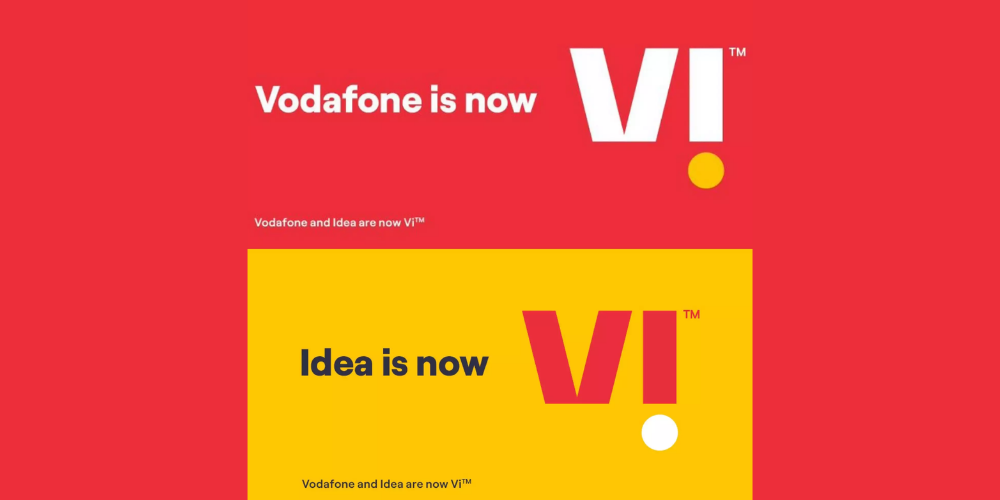
Strategic Rationale: The merger between Vodafone and Idea was driven by several key factors. Firstly, it allowed both companies to combine their resources, infrastructure, and customer base, resulting in a stronger market position. By pooling their assets and expertise, they could leverage economies of scale and enhance operational efficiency. Furthermore, the merger enabled Vodafone and Idea to create a robust network infrastructure capable of handling the increasing demand for data services.
Synergies and Integration: The successful integration of Vodafone and Idea was a critical factor in achieving significant growth. The companies focused on capturing synergies by aligning their operations, combining their technology platforms, and streamlining their processes. This integration allowed them to optimize costs, eliminate duplications, and enhance overall efficiency.
Lessons: The merger between Vodafone and Idea showcased the importance of leveraging the complementary strengths of both companies. The merger also highlighted the potential for synergy creation. By bringing together the resources, capabilities, and market presence of both companies, Vodafone Idea Limited was able to achieve cost savings, improve operational efficiency, and enhance its overall competitiveness. In 2018, Vodafone Idea unveiled its brand new identity ‘Vi’ which marked the completion of the integration of the 2 companies.
Titan’s Leap into Online Business
Titan Company Limited, a renowned Indian consumer goods company, has been a market leader in the watch industry for several decades. However, with the advent of e-commerce and changing consumer preferences, the company recognized the need to transform its business model and embrace the online marketplace. This case study explores Titan's successful journey towards becoming an online enterprise and highlights the strategic initiatives that propelled its growth in the digital space.
Strategic Shift: Founded in 1984 as a joint venture between the Tata Group and the Tamil Nadu Industrial Development Corporation, Titan initially focused on manufacturing and selling watches. Recognizing the potential of online retail, Titan embarked on a comprehensive digital transformation strategy. The company invested heavily in technology infrastructure and talent acquisition to build a robust e-commerce platform that offered a seamless shopping experience to its customers. Additionally, Titan forged strategic partnerships with leading e-commerce players, enabling it to leverage their vast customer base and reach.
Product Innovation: One of the key drivers of Titan's success in the online space was its focus on product innovation. The company introduced a wide range of trendy and affordable watches, jewelry, and eyewear specifically designed to cater to the preferences of online shoppers. By leveraging data analytics and consumer insights, Titan was able to identify emerging trends and develop products that resonated with its target audience.
Digital Marketing: To create brand awareness and drive traffic to its online platform, Titan adopted a comprehensive digital marketing strategy. The company utilized social media channels, search engine optimization techniques, and influencer marketing campaigns to engage with its target audience effectively. Titan also implemented various strategies to enhance the user experience on its online platform.
Loyalty Program: To encourage repeat purchases, Titan introduced a loyalty program for its online customers. This program offered exclusive discounts, rewards, and personalized recommendations based on each customer's preferences and purchase history. By incentivizing customer loyalty, Titan was able to build a strong base of repeat buyers and increase customer lifetime value.

Overall, Titan's leap into the online business was a resounding success. Through strategic digital marketing, enhanced user experience, a loyalty program, efficient operations, and a diverse product range, the company was able to establish itself as a prominent player in the e-commerce industry.
Impact of Blockchain Technology on Traditional Industries (Finance & Supply Chain Management)
Blockchain technology, initially introduced as the underlying technology behind cryptocurrencies such as Bitcoin, has evolved into a powerful tool with the potential to revolutionize traditional industries.
Finance
Blockchain technology has the potential to disrupt the financial industry by offering secure and transparent transactions without the need for intermediaries. The case study examines how blockchain can streamline payment processes, reduce transaction costs, and enhance financial inclusion.
Example
Ripple is a prime example of how blockchain technology has streamlined the payment process in the financial industry. Ripple's blockchain-based payment protocol allows for fast, secure, and low-cost cross-border transactions.
Traditionally, international payments can take several days to complete and involve multiple intermediaries, resulting in high transaction fees. However, Ripple's technology enables near-instantaneous settlement and eliminates the need for intermediaries, significantly reducing both the time and cost associated with cross-border payments. This has immense implications for businesses and individuals who rely on international transactions, as it allows for faster, more efficient, and cost-effective transfers of funds.
Supply Chain Management
The adoption of blockchain technology in supply chain management can enhance transparency, traceability, and efficiency across the entire value chain. This case study investigates how blockchain can mitigate issues such as counterfeiting, fraud, and supply chain disruptions.
Example
One example of how blockchain technology has benefited traditional industries is in the case of Maersk. Maersk, a global shipping company, has successfully implemented blockchain technology in its supply chain management processes.
With the use of blockchain, Maersk is able to ensure the authenticity of its products throughout the supply chain. By recording every transaction and movement of goods on the blockchain, the company can verify the origin and history of each product, making it difficult for counterfeit products to enter the market. This not only protects consumers from purchasing fake goods but also safeguards the reputation of Maersk as a trusted brand.
Furthermore, blockchain technology has enabled Maersk to optimize its inventory management. By having real-time visibility of inventory levels and movements, the company can accurately track and manage its stock, reducing the risk of overstocking or understocking.
In terms of logistics, blockchain has provided Maersk with enhanced transparency and traceability. Through the use of smart contracts and digital records on the blockchain, the company can easily track the movement of goods from one location to another.
Overall, Maersk's adoption of blockchain technology has brought significant benefits to the company in terms of ensuring product authenticity, optimizing inventory management, and improving logistics.
Unacademy: A Case Study on Digital Transformation in Education
Unacademy was founded in 2015 by Gaurav Munjal, Roman Saini, and Hemesh Singh as a YouTube channel providing free educational content. Over time, it evolved into a comprehensive online learning platform offering courses for various competitive exams in India, such as UPSC, SSC, and banking. Unacademy's mission is to make quality education accessible to all by leveraging technology and empowering educators.
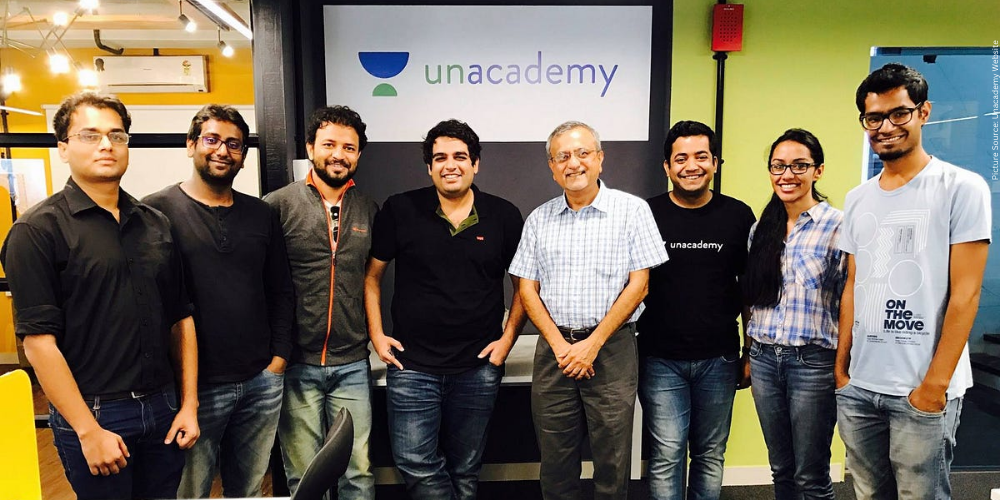
Digital Transformation Initiatives: Unacademy's digital transformation initiatives have played a pivotal role in reshaping the education landscape in India. The company has embraced innovative technologies, such as artificial intelligence (AI), machine learning (ML), and data analytics, to enhance the learning experience for students.
Personalized Learning: Unacademy's platform utilizes AI and ML algorithms to personalize the learning journey for each student. By analyzing user behavior and performance data, the platform recommends relevant courses and study material tailored to individual needs. This personalized approach has significantly improved student engagement and outcomes.
Live Classes and Interactive Sessions: Unacademy offers live classes conducted by experienced educators, allowing students to interact with them in real-time. These interactive sessions foster active learning, enabling students to clarify doubts, participate in discussions, and receive personalized guidance. The use of technology has made education more engaging and accessible.
Gamification and Competition: Unacademy gamifies the learning experience by incorporating quizzes, challenges, and leaderboards. This gamification strategy motivates students to actively participate, compete with peers, and earn rewards, making the learning process enjoyable and immersive. The use of technology has transformed education into a fun and competitive endeavor.
In conclusion, by providing accessible and affordable online learning resources, Unacademy has democratized education and empowered millions of learners. Their success showcases the immense potential of technology to bridge educational gaps and transform traditional learning methods.
Analyzing the Impact of Technology on Healthcare Delivery and Patient Outcomes
In recent years, the healthcare industry has witnessed a significant transformation due to the rapid advancements in technology. From electronic health records (EHRs) to telemedicine, these technological innovations have had a profound impact on healthcare delivery and patient outcomes. This case study aims to analyze the various ways in which technology has revolutionized healthcare, exploring its benefits, challenges, and future implications.
Integration of Electronic Health Records (EHRs): One of the most notable advancements in healthcare technology is the widespread adoption of electronic health records. EHRs have streamlined the documentation process, enabling healthcare providers to access patient information easily and securely. This has led to improved care coordination, reduced medical errors, and enhanced patient safety.
Telemedicine and Remote Patient Monitoring: The advent of telemedicine has revolutionized healthcare delivery, particularly in remote or underserved areas. Telemedicine allows patients to consult with healthcare providers virtually, eliminating the need for physical visits. This not only improves access to care but also reduces healthcare costs and enhances patient convenience. Moreover, remote patient monitoring technologies enable healthcare professionals to remotely monitor patients' vital signs and health conditions, leading to early detection of potential issues and proactive intervention.
Artificial Intelligence (AI) and Machine Learning: The use of artificial intelligence and machine learning algorithms has significantly impacted healthcare delivery and patient outcomes. AI-powered systems can analyze vast amounts of medical data, assisting in accurate diagnosis, treatment planning, and predicting patient outcomes. Machine learning algorithms can identify patterns in patient data, enabling personalized treatment plans and early detection of diseases.
Internet of Things (IoT) and Wearable Devices: The key benefit of IoT and wearable devices in healthcare is the ability to collect real-time data. These devices can continuously monitor various health parameters such as heart rate, blood pressure, and glucose levels. This data can be transmitted wirelessly to healthcare providers, allowing them to closely monitor patients' conditions remotely. By having access to real-time data, healthcare professionals can detect any abnormalities or changes in patients' health status promptly and take necessary actions, potentially preventing complications or emergencies.
In conclusion, technology has had a significant impact on healthcare delivery and patient outcomes. It has improved efficiency, accuracy, and accessibility of healthcare services. From electronic health records to telemedicine, technology has revolutionized the way healthcare is delivered, leading to better patient outcomes and overall healthcare quality.
Case Studies For Further Reading
If you enjoyed reading the above MBA case studies, here are some more tales that you might love to explore:
Enron Scandal
The Enron scandal was one of the biggest corporate frauds in history. It involved the manipulation of financial statements to hide debt and inflate profits, leading to the bankruptcy of the energy company in 2001. The scandal exposed the unethical practices of Enron executives and led to increased scrutiny of corporate governance.
Starbucks crowdsourcing success story
This is an excellent case taught in IT focusing on the impact that an effective social media strategy can have on a company. Starbucks created a crowdsourcing platform called 'My Starbucks Idea' in the March of 2008 with the aim to engage with its customers. The objective was to let the customers create products and services for the company. They can go to the platform and share their idea. The idea if viable will be implemented by Starbucks. In this way, the company can get data about customer preferences and leverage it to refine itself.
3M Corporation HR Policy
3M Corporation's HR policy is a case study in employee empowerment and innovation. With a focus on autonomy and creativity, 3M encourages the 15% Rule, allowing employees to spend a significant portion of their time on personal projects, fostering a culture of innovation and continuous learning within the organization.There are many other philosophies as well like the 30 percent rule, Dual Ladder career path, Seed capital, etc, that are keeping the employees motivated and making the company earn good profits.
Adhaar Number Implementation (2009)
Launched in 2009, Aadhaar is India's innovative identification project. It assigns a unique 12-digit number to residents, streamlining access to services. Despite controversy over privacy, it significantly enhances governance, financial inclusion, and social benefits distribution. The large-scale implementation reflects the evolving landscape of identity management in the digital age.
Air India Turnaround
In 2019, Air India underwent a turnaround initiative to address financial woes and operational inefficiencies. The case study delves into strategic decisions, cost-cutting measures, and attempts to enhance operational efficiency. It portrays the challenges faced by the airline industry and the complex journey of revitalizing a national carrier in a competitive market.
Flipkart-Walmart Deal (2018)
The Flipkart-Walmart Deal refers to Walmart's acquisition of Flipkart, a leading e-commerce company in India, in 2018. This deal marked Walmart's entry into the Indian e-commerce market and showcased the growing importance of global business collaborations in the country's rapidly expanding digital economy.
Microsoft's Acquisition of LinkedIn
Microsoft's acquisition of LinkedIn in 2016 was a significant move that brought together two major players in the tech industry. The USD 26.2 billion deal allowed Microsoft to tap into LinkedIn's vast professional network and data, while LinkedIn gained access to Microsoft's resources and technology. This acquisition aimed to enhance Microsoft's presence in the business and professional networking space.
Indian IT Indsusty’s Response to Great Resignation
From activating the Non-Compete Clause to employee benefits, study how Indian IT firms navigated through the Great Resignation phase. The case study also highlights the indispensable role of HR department in dealing with such scenarios.
Summing Up...
Through these actual business situations, we learn a plethora of things such as brand management, business administration, acquisition strategy, etc. without bearing any actual risks and potential losses as in real life. This facilitates quick thinking and gives students good knowledge about what a challenging experience can be.
You might also be interested in reading:
- How Is CRED Becoming The New “Marketing ka Gunda”?
- MBA curriculum overhaul needed to ensure employability, say academicians
- How Upstox's Magical Marketing Strategy Earned It A Spot As One Of The IPL 2021's Lead Sponsors?
- Australia's Richest Woman Who Owns $40 Billion Company Once Sold Scarves| Melanie Perkins, Co-founder, Canva Shares Entrepreneurship Lessons
- The Inspirational Story of Balvant Parekh | The Man Behind Building an INR 7000+ Crore Empire
As a biotechnologist-turned-writer, I love turning complex ideas into meaningful stories that inform and inspire. Outside of writing, I enjoy cooking, reading, and travelling, each giving me fresh perspectives and inspiration for my work.
Login to continue reading
And access exclusive content, personalized recommendations, and career-boosting opportunities.
Subscribe
to our newsletter
















Comments
Add comment